











Why is it Important to Work with a Licensed Real Estate Agent and a Long Standing Real Estate Company?

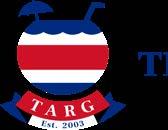



Buying Real Estate? The Basics
What our Reasons Why Love Living Here?
How Do People Enjoy Life Here? CLICK OR
What are our 99 Reasons Why We Living Here?
Are Real Estate Agents Licensed in Costa Rica?



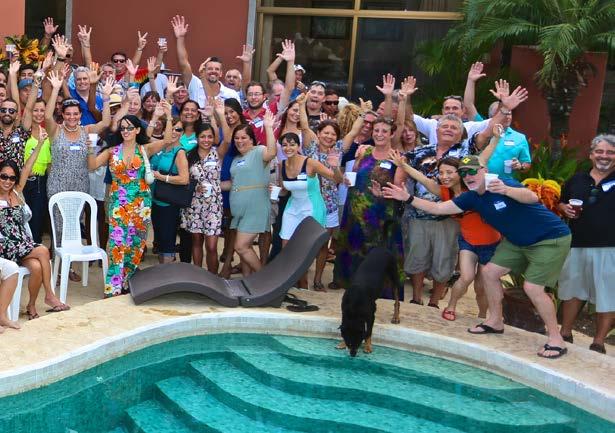

CLICK YOUR QUESTION OR HERE FOR MORE SOLUTIONS:


Spanish 84,054 German 60,935
Italian 46,949 Portuguese 37,628
Hebrew 36,135 French 1,033


Ethics is a concept that can be quite complex and confusing for many people. It’s not always easy to understand what is and is not ethical, especially since everyone has different beliefs and values.
However, the question remains — does ethics actually mean anything in your life?
The principles of ethics are based on moral values, which vary depending on your cultural, social, and personal beliefs, and how you were raised.

Some common ethical principles include honesty, loyalty, fairness, respect and responsibility. These principles guide our behavior regardless of whether there are any laws or rules in place that regulate them.
Ethics play a vital role in shaping the type of person you are and the kind of people you attract.
But why should you care about ethics?
Other people's ethics do affect you. For one, ethical behavior and principles are the foundation for building trust and promoting positive relationships. If you consistently act in an ethical manner, people will trust you and be more likely to want to work or do business with you.
by John QuamOn the other hand, if you act unethically, you will not only lose people’s trust and respect, but you may also face legal consequences.
Furthermore, your own personal ethics can bring a sense of fulfillment and purpose to your life. Living a life guided by principles that align with your moral beliefs can give you a sense of peace and satisfaction. It can also help you make better decisions and navigate challenging situations with confidence.

Now let's talk about the importance of ethics in the workplace. Employees are often expected to follow a certain standard of behavior while on the job, which includes adhering to ethical principles. If someone in the workplace acts unethically, it can not only harm the reputation of that individual, but it can also damage the business's reputation. Don’t forget, the world is a small place and information is transmitted rapidly.
Ethics are the moral principles that govern our behavior and guide us toward making the right decisions. The importance of ethics in the workplace can never be overstated.
Do the ethics of the person in charge transfer to how their employees act?

Yes, they certainly do. When leaders display positive ethical behavior, their employees are more likely to follow suit. On the other hand, if a leader acts unethically, it can create a toxic work environment where employees feel uncomfortable and may even engage in unethical behavior themselves. “They did it so I can too” is their rationale.
By setting clear guidelines and expectations, employees are more likely to uphold ethical behavior and create and maintain a positive impact that your group is known for. Leaders set the tone for their teams.
What if the leader is a director of an ethics group and commits an ethics violation?
If the leader of an ethics group commits an ethics violation, it is a serious breach of trust and can undermine the credibility of the entire organization.
It can also have a lasting negative impact on the lives of those involved. If the leader is found to have violated ethical standards, it is important that they are held accountable and take responsibility for their actions.
It is also essential that the organization takes steps to ensure that such an incident does not happen again. This means that the organization must take a hard look at its ethical policies and practices and make any necessary changes to prevent future violations.
Ethics mean a great deal in our lives, and when a leader in an ethics group fails to live up to these standards, it diminishes the value of ethics and undermines the group's causes. It also puts into question those who are a part of the organization and advertise it as a way to attract business.

A damaged reputation is hard to repair. What happens if your ethics are attacked unjustly by an adversary? Should you respond or let it go and consider the source?
Basically, it comes down to you only own your name once.

John B. Quam
Your own personal ethics can bring a sense of fulfillment and purpose to your life.
Costa Rica’s rainy season has been unusually late getting started this year, at least in Guanacaste. But Howler readers can be all set to enjoy this time of year in ways that may seem surprising. Our related cover stories aim to challenge common rainy season myths, while suggesting a variety of outdoor and indoor activities alike — from whitewater rafting to museum visits.
We’re delighted to introduce a new food and dining section, including traditional Tico recipes and a reader’s choice page with eatery recommendations. In the same issue, you’ll find fascinating flora and fauna features, mountain bike tour inspiration and stunning beach images viewed through a drone’s lens. We highlight the sports of kitesurfing and pickleball in Costa Rica, as well as an innovative dog rescue initiative and a local community band’s Rose Parade success story. Our artist spotlight shines on the captivating works of a muralist and a wood sculptor.
Nicola Bertoldi. Introduced kiteboarding to Costa Rica in 2000 and opened Central America’s first kiteboarding school in Bahia Salinas.
Terry Carlile. Served as a U. S. Navy journalist for eight years, and is also a workshop trainer and keynote speaker.
Josué Gómez. Attorney and notary public at GM Attorneys in San José.
Karl Kahler. Author of "Frommer's Costa Rica 2017," former travel editor of the Tico Times and former national editor of California's San Jose Mercury News.
Mary Martin Mason. Published author whose latest book, Casa de Doloros, was inspired by her experiences and adventures as a U.S. expat living in Atenas, Costa Rica. A regular writer for the Mango Musings blog, and also an award-winning former columnist with The Southwest Journal in Minneapolis, who also taught high school English in Houston, Japan and Minnesota.
Juan Carlos Rojas. Costa Rican writer and nature guide living in Dominical.

Patricia Sterman. Argentinian fashion design graduate, living in Costa Rica for more than 20 years. Owner of Azul Profundo Boutique, jewelry manufacturer and co-founder of SalveMonos animal protection group.

PUBLISHER / EDITOR-in-CHIEF
John B. Quam
executive director - Terry Carlile
Captain Paul Watson. Globally renowned ocean conservationist and environmental activist, advancing marine ecosystem protection initiatives through the new Captain Paul Watson Foundation. Co-founder of the Greenpeace Foundation and founder of the Sea Shepherd Conservation Society.
Anna Kathryn Williams. Freelance writer and children’s book author from Memphis, Tennessee who studied at the University of Mississippi. She will be publishing a series of children’s books called Conscious Kiddos in 2024.
Jalil El Harrar. German photographer now living on the Central Pacific coast of Costa Rica. He is a master of capturing art in nature, transpiring over years of disciplined observation and commitment to his craft.

Fred Lipsky. Retired New York police officer, now enjoying kayak fishing and nature photography adventures in Costa Rica.
account executive
Mary Fernández
Editorial Staff
Debbie Bride - Editorial Coordinator
Laurie Quam - Copy Editor
HOWLER (™) 2017
Cont act
John Quam - Managing Partner headmonkey@howlermag.com
Editor: editor@howlermag.com
Advertising: terry@howlermag.com
Design: design@howlermag.com
CR Office: (506) 4701-5942
Howler Magazine Costa Rica @howlercostarica @thehowlermag @howlermagazine
The Howler Gold Coast CR S.A. Ced. Juridica: 3-101-725213
The opinions, beliefs and viewpoints expressed by the various authors in this publication do not necessarily reflect the opinions, beliefs and viewpoints of Howler organization or its advertisers.
• Artesano Architect and Design
• Bookstore of the Waves
• Force One Security
• GM Attorney
• Hidden Garden Art Gallery
• Horizon Pacific Rental Property
• Grupo Tropigala S.A.
• Liberty Express
• Mar Vista
• Odry's Massage
• Tres Amigos Realty Group
All rights reserved. No part of this publication may be reproduced, distributed, or transmitted in any form or by any means, including photocopying, recording, or other electronic or mechanical methods, without the prior written permission of the publisher, except in the case of brief quotations embodied in critical reviews and certain other noncommercial uses permitted by copyright law. For permission requests write to: info@howlermag.com.
The Howler Magazine does not assume responsibility for the content of its advertisements.
Images not credited are acquired from stock photography services.
Copyright © 2023
The Howler Gold Coast CR S.A
Copyright © 2023 Howler Media Holding, Inc. Panama

The Howler Gold Coast CR S.A.
Ced. Juridica: 3-101-725213
HOWLER (TM)2021
Click on the section to go directly to those pages.
UP FRONT:
• Busting the Myths About Rainy Season

• Don't be Deterred by the Rainy Season
• Whitewater Rafting and Other Adventures
Editorial: Ethics: Why Should You Care?
TRAVEL & ADVENTURE
• Should I Use a Travel Agent?
• Two New Plant Species Indentified
• Tropical Flowers and Hummingbirds
• Mountain Bike Tours
• The Emerald Toucanet
• Blue Zone Drone Takes You Higher
• Presidential Fishing Challenge
• Costa Rica Issued First License
• Low Impact Environmental Projects
• Why Costa Rica Must Regulate Unlicensed Vacation Rentals
• Costa Rica Needs to Maintain Climate Achieved in Recent
• Honda Launches Preventive
CR FASHION
• Staying Happy in the Rain
• The Bikini
ARTS, CULTURE & ENTERTAINMENT
• Thank you Hidden Garden Art Gallery
• Marching to the Rose Parade Beat
• The Language of Wood
• Rolo's Then and Now Collections
• Muralist Returns to Restore Atenas Mural
• A Rescue Quest in Costa Rica
• Pickleball Sweeping Costa Rica
• Sailing Into Harm's Way
• Spanish: Wining and Dining
• Tide Chart, Sun, Moon Schedule
• The Diversity of Surf Locations
• Kitesurfing Costa Rica
License for Medical Cannabis Projects
Regulate Untaxed and Rentals
Maintain the Good Investment
Decades
Preventive Campaign
Rica Rica
Schedule Locations
• Tuanis Sunset Realty
• Horizon Pacific
• Sun Real Estate
• Grupo Tropical

• Tres Amigos
• Reader's Choice: Grill Alvarito
• From the Kitchen: Plantain Fritters
• Recipe - Smash Tacos
• Recipe - Black Bean Salad
Perhaps some of the myths and misconceptions can be challenged with this information about the rainy season in Costa Rica. For starters, these are some reasons why the rainy season can be a great time to visit this amazing country:

• Fewer crowds
• Open availability
• Lower prices
• More wildlife
Yes, of course the chances of rain increase, depending on which region of Costa Rica you are visiting. You might have rain on any given day or not. There could be a thunderstorm or two the same day — morning or evening. Sometimes you might even experience all-day-long showers if certain atmospheric conditions exist.

The increased rainfall results in new growth, which in return attracts more wildlife.
Costa Rica’s rainy season — also known as the green season — typically spans the months from May to November. It can provide a unique experience in Costa Rica. The weather during this period is characterized by afternoon showers and short spells of rain. It can be a wonderful time to experience Costa Rica’s lush green forests, stunning waterfalls, and swollen rivers.
During the rainy season, it’s essential to prepare for the changes that come with the weather. The increased rainfall can often result in flooding and landslides, thus causing roadblocks and delays. It is advisable to keep an eye on the weather forecast and plan your travel accordingly. It’s also important to dress appropriately for the rainy weather, with comfortable waterproof clothing and shoes. Also be sure to take measures to protect yourself against mosquito bites, which tend to increase during the rainy season.


The rainy season favorably affects the flora and fauna of Costa Rica. The increased rainfall results in new growth, which in return attracts more wildlife. The rainfall can also make it easier to spot exotic animals such as monkeys, sloths, and colorful birds. However, some attractions may be limited or closed due to the weather.


For instance, some hiking trails might close due to conditions created by rain or rivers rising to dangerous levels. It is, therefore, important to keep up to date with the park regulations and the respective activities.
Such obstacles need not prevent anyone from experiencing Costa Rica's natural beauty during the rainy season. This is a rugged and vibrant destination, with something for everyone throughout these so-called “low season” months and beyond. The rain certainly makes everything very fresh and green. The tourists who are here during the high season from December to May don’t get to experience the greenness. They call this paradise. But imagine what they would say after seeing all the greenery!
While it might seem like Costa Rica’s rainy season is best avoided, some of the top things to do in the country can actually be enjoyed during this time.


It really can be a hit/miss situation of rain here, but an hour away, dry.
For example, the season is ideal for exploring the country's lush national parks, which are less crowded and at their greenest and most vibrant. Monteverde Cloud Forest Reserve is a top destination for those looking to immerse themselves in the rainforest, while also enjoying activities such as ziplining, hiking, and bird watching.
Another must-do activity during Costa Rica's rainy season is visiting the country's numerous waterfalls. The increased rainfall during this time of year means that these waterfalls are at their most impressive, with higher water volumes and mistier spray. Some of the best waterfalls to visit during the rainy season include La Paz Waterfall Gardens, Nauyaca Waterfall and Llanos de Cortés Waterfall.
Reasons why the rainy season is perfect for whitewater rafting in Costa Rica are covered in a related cover story.
Overall, while the rainy season might not seem like the most appealing time to visit Costa Rica, there are still plenty of experiences to be had that make the trip more than worth it.
A lightweight raincoat is also an investment you won’t regret!

• Work remotely for a few weeks
• Write a book
• Read a book
• Conduct research
• Paint
• Binge-watch a TV series
• Play table games
• Put together some 1,000-piece puzzles


• Catch up on some missed movies or rewatch your favorites
• Go through photographs and retell the stories

• Create new crafts
• Try cooking new food recipes
• Practice karaoke
• Build a model airplane, car, boat or town
• Complete crossword and other puzzles
• Have an indoor treasure/scavenger hunt
• Make up adventure stories
• Exercise or yoga
• Unplug from all electronics for a set number of hours
• Relax in the hammock on the porch
When the clouds open up, these are some alternative pastimes you can enjoy alone or in good company.
 by Terry Carlile
by Terry Carlile
Costa Rica is a country known for its exotic flora and fauna, beautiful beaches and lush rainforests. Some might assume that it is not the best vacation spot during the rainy season, which lasts from May to November. However, there are still plenty of activities to enjoy even when it is raining.


Among the best rainy season attractions are Costa Rica’s hot springs. During this season, the hot springs are less crowded, and you can relax in the warm waters while listening to the sound of the rain. People come to the hot springs to soak in the mineral-rich waters and indulge in the mud treatments that leave their skin feeling soft and refreshed.
Another great rainy season activity is whitewater rafting. During this time, the rivers are swollen with rainwater, making it a thrilling adventure for those seeking an adrenaline rush. Some of the best whitewater rafting locations include the Río Pacuare and Río Sarapiqui.
While many may assume that the rainy season is not ideal for beachrelated activities, there are still plenty of beautiful beaches to explore. Some beaches, like Jacó or Tamarindo, are popular year-round and offer something for everyone
— from relaxing on the sand to surfing or paddleboarding. Plus, Costa Rica’s rainy season does not always feature torrential downpours, so it's possible to catch a break in the clouds and enjoy some sunshine on the beach.
It's an impressive venue showcasing local arts and entertainment at their finest.
While many may feel deterred by Costa Rica's wettest months of the year, there’s no shortage of fun activities to choose from. With hot springs, whitewater rafting, awesome beaches and indoor venues — there is something for everyone, rain or shine.
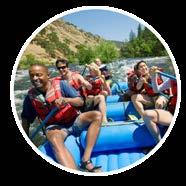
As the rainforest buds with life, hiking through the verdant forest is an excellent activity during the rainy season. The greenery is in full bloom and the wildlife is thriving. From sloths and monkeys to jaguars, the possibilities of what you might encounter are endless. If you want to get off the beaten path, consider visiting Monteverde Cloud Forest Reserve, where you can hike through the canopy and witness the beauty of the rainforest up close.
Finally, rainy days are perfect for visiting indoor attractions like museums or art galleries. In addition, a variety of cultural events taking place indoors during the rainy season. The National Theater in San José is an exquisite setting to enjoy ballets, operas, and plays.

Don't let the rain stop you. Come and experience the green lushness of Costa Rica in its fullest during the rainy season.
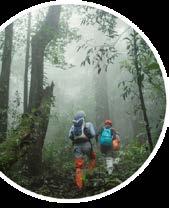

The hot springs are less crowded, and you can relax in the warm waters while listening to the sound of the rain.
 byJohn Quam
byJohn Quam

Costa Rica is a small country in Central America that boasts a lush tropical jungle and pristine beaches. Its varied landscape is also home to some of the best whitewater rafting in the world. And what better time to experience the thrill of whitewater rafting than during Costa Rica's rainy season?
This season, which runs from May to November, is often overlooked by travelers. But it offers a unique opportunity to explore the country's beautiful rivers and experience the wild rapids up close.
Here, we take a closer look at why the rainy season is the best time to go whitewater rafting in Costa Rica, the top rafting spots, and how to plan your trip to make the most of this adventure.
For many travelers, Costa Rica's rainy season might seem like a less desirable time to visit. However, for adventure-

seekers, this is a great time to visit the country and enjoy its natural beauty. Here’s what you need to know about Costa Rica's rainy season.
Rainy season in Costa Rica typically runs from May to November. While it may seem like staying indoors makes sense, it’s actually a great time to experience the country’s natural beauty. Rainfall varies greatly depending on location, but it’s generally intermittent and occurs during short, intense bursts.
During rainy season, Costa Rica’s forests and jungles are at their most vibrant and verdant. The rivers are also full and flowing, making it the perfect time to go whitewater rafting. Additionally, during the off-season, prices for accommodation and tours are typically lower, making your trip more affordable.
If you’re looking for adventure, whitewater rafting in Costa Rica during rainy season is a must-do.
If you’re looking for adventure, whitewater rafting in Costa Rica during rainy season is a must-do. Here’s why.
During rainy season, the rivers in Costa Rica are at their highest level and most exciting. You can expect more intense rapids, stronger currents, and overall more thrilling rafting experiences. Additionally, the water is warmer during this time of year, making it more comfortable to get wet for extended periods.
Costa Rica has some of the best whitewater rafting in the world, and during the rainy season, the conditions are even better. Here are some of the best places to go whitewater rafting in Costa Rica.

Click here for more:

• Whitewater rafting safety precautions and tips
• What to expect on a Costa Rican whitewater rafting adventure
• Types of rapids you’ll encounter
• Wildlife you might see along the way
• What to wear and bring for your rafting trip
• Other rainy season activities to enjoy in Costa Rica
• Hiking and exploring Costa Rica’s national parks
• Learning about Costa Rican culture and history
• Planning your rainy season whitewater rafting trip in Costa Rica
• What to consider before booking
• When to go and what to expect from rainy season
• What to Include in your rainy season packing list
• Conclusion: embrace the rain and experience the thrill of whitewater rafting in Costa Rica

• What is the weather like during Costa Rica’s rainy season?
• Is it safe to go whitewater rafting during the rainy season in Costa Rica?
• What should I pack for a whitewater rafting trip during the rainy season?
• Are there age or fitness restrictions?




Are you prepared for the rainy season in Costa Rica? Before we know it, all the dust will blow away and the muddy roads will come back. As we move from hell-hot April into a greener, fresher May, some wardrobe adjustments are needed as well.
Here are some tips for preparing to stay comfortable, stylish and happy during rainy season.

First of all, do you have rain boots? You might want them. I prefer the short boot styles because wet weather here doesn’t necessarily make it any cooler. Staying dry but also cool at the same time is a balancing act. A cheap pair of rain boots can often be found at your nearest hardware store, or look for better options in other stores.
For rain jackets, the same need to fend off moisture and heat simultaneously applies. Choose the softest, lightest-weight fabric you can find. If not, sweating will find you trapped inside a different kind of rainy season of your own making. With mosquitoes and purrujas (sand fleas) also coming back with the greenery, we need that kind of protection from our clothing as well.
It’s time to move into long pants, again keeping the materials soft, loose and lightweight. While striving to cover as much bare skin as possible, keep in mind that if the hem length is too long, the caked-on mud stains can be very stubborn to remove.
Umbrella is synonymous with always, when it comes to leaving one in the car and otherwise carrying one with you everywhere. Always be prepared as if it’s the rule, rather than the exception, for rain to start suddenly without warning. Having a sarong or towel handy as well is a good idea too. Even with an umbrella, your feet might get wet and it’s nice to have something to dry off with.
As our surroundings transform from yellowish brown to flourishing jungle greens, you should do the same, moving into vibrant, earthy colors and happy prints. Rainy season may last a few months but seem like an eternity; prepared is the best way to face it.

The bikini has come a long way from its humble beginnings.

The history of bikinis is a fascinating one. It all began in 1946 when French engineer Louis Réard created the first two-piece swimsuit that exposed the navel, known as the bikini. Initially, it was met with resistance and deemed too risqué for public taste. However, over time it gained popularity, especially among Hollywood starlets like Marilyn Monroe and Brigitte Bardot.

In the 1960s, bikinis became even more daring with thong styles and bold prints. Since then, there have been many variations from highwaisted bottoms to string bikinis made famous by Victoria's Secret
models. Today bikinis are worn worldwide and continue to evolve with new styles constantly being introduced to fit every body type.
The bikini has come a long way from its humble beginnings but remains an iconic staple of summer fashion.
A uniquely Tica bikini backstory — featuring several Costa Rican designers — is told in Howler’s Sewing a Different Pattern on and Off the Waves. You can discover more Costa Rican bikini designers by any quick internet search. Click
Mattia Masanes
Photographer: Fabián Moreaux
Makeup: EkaMakeuplooks
Zejí is a textile proposal that was born in 2009 with of offering creative and innovative pieces as creative process based on textures, colors, shapes trends in the world of fashion to achieve an exclusive, design adapted to clients who are mainly men.

We are a brand that works in artistic entrepreneurship, is why we develop hand in hand with the cultural country as costume designers for dance and mixing various techniques that interweave theatricality daily life.
See More Fashion


Model: Douglas Castillo
Photographer: Fabián Moreaux
Makeup: EkaMakeuplooks
Model: Esteban Castillo
Photographer: Fabián
Makeup: EkaMakeuplooks
with the vision a result of a shapes and current exclusive, modern men. entrepreneurship, which cultural sector of the theater works, theatricality with

Fabián Moreaux

EkaMakeuplooks
Makeup: EkaMakeuplooks
Castillo Douglas Castillo and Esteban Castillo Photographer: Fabián Moreaux

Abundance of full-service grocery stores, specialty food shops, butchers and vegetable stores stocking an extensive variety of both local and North American brands. Full range of world class Medical Clinics and Hospitals, both public and private.
Excellent Veterinarian care and pet groomers
Hub for world class Watersports (Diving, Sport Fishing, Surfing, Snorkeling, Sailing, Kayaking)
World Class Private Schools.
Full range of Car Dealerships and highly qualified Mechanics. Large variety of Spas, Beauty Salons, and Barbershops.
Excellent Gyms, Fitness Centers, Tennis Facilities and Yoga Studios along with qualified professional and personal trainers.
Excellent Golfing, Bicycling, Hiking, Adventure Parks.
Various well stocked hardware stores, clothing shops and specialty stores.
Within 20-25 minutes from Guanacaste International Airport (LIR) with numerous direct flights to North America and Europe. Dozens of restaurants with a wide selection of cuisine from basic local fare to 5 star dining experiences.
Varied nightlife options from full on party scene to relaxing beach front bars.
Vibrant Live Music venues and first run movie theaters
Large and welcoming EXPAT community
One hour to full range of National Parks, and Non Beach Tourist attractions.
Stunning array of Beaches, all public.
Excellent Mail service and full international package service (UPS, DHL, etc.)
Average temperature 73 to 90 degrees (F)
Average annual rainfall 55.9 inches




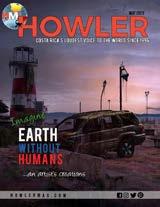
CLICK HERE TO JOIN


Originally published in Mango Musings, March 2, 2023
Photos courtesy of Mango Musings
Early in his career, Mexican artist Diego Rivera copied the classical art of his European contemporaries. Wanting to capture the history of the pre-Hispanic people that were his ancestors, none of whom were reflected in traditional art, Rivera returned to an ancient form of art that dates back 30,000 years. He became a muralist.
When restaurant owner Gabriel Aguilar Arreola, opened the popular Iguanas Restaurant and Pizzeria in Atenas, he commissioned Leonel Méndez Pérez to create a mural to enhance the open air dining area. He said, “I needed a magical space that would provide a pleasant experience for our clients.”

From their first meeting, Aguilar and Méndez became good friends. Aguilar gave the artist absolute freedom, knowing he had the credentials to execute the painting. Aguilar suggested a natural landscape with symbolic animals. The result is a backdrop so delightful that children try to chase the still life animals and birds.
Méndez’s talents extend into music. He studied music at the Universidad Nacional de Costa Rica. His first instrument was the saxophone, and he excels in playing the guitar. Twenty-five years ago, he had a music school that is now closed. COVID shut down his art academy in Puriscal. Now, he teaches art online and recently returned from a teaching stint in Germany and Denmark. While in Denmark, he created a mural of Venice for an Italian restaurant that included a perfectly set table in a corner that is indistinguishable from the other tables.
The result is a backdrop so delightful that children try to chase the still life animals and birds.Mural The Sleeping Lady Leonel Méndez Pérez with Iguanas mural
Méndez’s mural has been damaged from the elements, so he has returned to restore his art. The painting that took 18 days to complete will require a full month to repair. Daily, Méndez climbs the scaffolding in the scorching sun to touch up the faded colors and give his masterpiece new life. This is dangerous work, particularly in the windy season. On several occasions, he has had to climb like a monkey on the scaffolding and retrieve his tools before they blow away.
When Méndez first envisioned the mural, he thought of incorporating local symbols of nature. Painting a canvas only requires the artist to stand in place and observe the progression of the piece. A mural, though, requires constant stepping back from the scaffolding to observe and make changes.

Atenas residents are familiar with the Sleeping Woman, a natural phenomenon that can be seen on Ruta 27 between Atenas and San José. The earliest indigenous inhabitants of Costa Rica noticed how the mountains formed the shape of a reclining woman, golden in her repose at sunrise. The Sleeping Lady perpetually rests atop the mural. Méndez cleverly has added a pillow of clouds for her to rest her head. She appears to be sleeping on a mattress of clouds.
The owner of Iguanas only made one request of the artist. Aguilar didn’t want too many animals because he didn’t want it to look like a zoo. The point is well taken since the eye travels down from the Sleeping Woman to the familiar flora and fauna of Costa Rica. An iguana with a brilliant orange head, a three-toed sloth and scarlet macaws flank the main panel. One can almost hear the squawking of the macaws who fly off to the side of their favorite almond tree.
 Mural of Venice in an Italian restaurant in Denmark
mural
Mural of Venice in an Italian restaurant in Denmark
mural
It’s official! The young musicians who make up the Municipal Band of Zarcero (BMZ) in Alajuela have given Costa Ricans a resounding reason to celebrate, as they prepare to showcase their talents once again in the Rose Parade next year.
Wait … once again? Yes, the 135th Rose Parade on January 1, 2024 in Pasadena, California will mark the second time the BMZ participates in this iconic event, having been chosen by the Tournament of Roses Association. The first time was in 2020.


To call it a world-class honor is an understatement, partly because the 2024 Rose Parade theme is "Celebrating a World of Music.” Yet, of the 20 bands selected to march in the upcoming 2024 parade, only two others — representing Japan and Sweden, respectively — are from outside the U.S. So obviously, the BMZ is the sole Latin American participant.
The excitement began on March 4, National Marching Band Day — coinciding with the BMZ’s 15th anniversary — when word came from Pasadena announcing the successful 2024 Rose Parade applicants. Activities then got underway for a BMZ delegation, headed by its general director, Elesban Gerardo Rodríguez Rojas, to receive the official parade accreditation flag. It was presented by Tournament of Roses president Alex Aghajanian, who traveled with his wife to Costa Rica for the special flag ceremony. This took place at the Zarcero Fairground on Sunday morning, April 2 — fittingly preceded by a parade that the BMZ organized from the local park.
The live-broadcast event featured samples of the BMZ’s work, including a mosaic of musical arrangements that they presented at the 2020 Rose Parade. Another highlight was an artistic presentation by the Kabrú Rójc Brunkacj, who collaborated with Zarcero band members and gave permission to incorporate images and items of cultural significance in their Rose Parade performance.
Officials attending the Zarcero flag ceremony included Nayuribe Guadamuz Rosales, Minister of Culture and Youth; Michael Flores, Minister Counselor of the Embassy of the United States; Ronald Araya Solís, mayor of Zarcero; members of the Municipal Council and the Zarcero Music Association, and the Administrative Board of the Professional Technical College of Zarcero. Sponsor groups were also represented, including Coope-Ande No. 1 RL, the official sponsor, and INS Group, cosponsor.
The selection criteria for marching bands in the Rose Parade include musicianship, marching ability, uniqueness, entertainment value or special interest. Past parades have featured diverse band types, from drum and bugle corps to brass and percussion bands to bagpipes. High school, college and university, and military bands have taken part from around the world, including Asia, Australia, Europe, North America, Central America, and the Pacific Islands.
To learn more about the Municipal Band of Zarcero and view past performances, visit Facebook and Instagram.
To call it a world-class honor is an understatement.
Howler appreciates your partnership in showcasing the amazing variety of artists that Costa Rica offers, spanning over two decades. Your gallery will always be the standard to quality and customer service. Enjoy your retirement journey. Located



Howler discovered his historic comparison Follow Rolo on Facebook these before/after
San Jose, Costa Rica 1920 Street vendors of chickens... (children).
Calle 3, seen towards the National Theater.
The North wing of the Edificio can be seen, and then a fence where the Gran Hotel Costa a cornfield was cultivated, destroyed the buildings in
To the right is today the Plaza
Source: "The City of San José, Album of the National Bank

Credits: data shared by Alberto in 2017 (Old Costa Rica seen photographic lens of History).
Thanks to Checho Vargas, page "Manuel Gómez Miralles, historical legacy", for an exhaustive his part, with other photographs data, which allow us a comparison close as possible.
Thanks to Carlos Alcázar of Costa Rica", for his kind contributions to this server.

1890 - 2023 San Jose, Costa Rica. Avenue 6, looking west. The current photo is captured between 7th and 9th streets, observing as an approximate reference, the Colegio

the old photo).
discovered Rolo with comparison photos. Facebook to see before/after photographs: HERE
1920 and 2023 chickens... and their jackalins
North, in front of the
Edificio de las Arcades fence that marks the site Costa Rica is today, where cultivated, after a great fire that in 1913.
Plaza de la Cultura.
José, 1871 - 1971".
Bank of Costa Rica, 1971.
Alberto Solórzano seen through the History).
Vargas, administrator of the Miralles, his photographic exhaustive analysis of photographs and additional comparison that is as of "Old Photos kind and valuable server.

For Costa Rican sculptor Heiner Guido, wood is much more than the raw material he uses to create captivating works of art. It’s a communication medium — something solid and immobile that speaks to him before being brought to life through his imagination.

As the header text on Guido’s website conveys, “The wood itself has its own language, its color, its texture, the years lost in silence disintegrating in the forest, combined with the hands of the sculptor and faith.”
On a separate web page, Heiner elaborates on the role that faith — intermixed with talent and technique — plays in his artistic process.
“So in order to be able to create in a free and determined way, in addition to accumulating technical knowledge, anatomy, composition, drawing, I am strengthening my faith. With faith, we can see things that have not happened yet, and work without seeing anything, but with the certainty of what will happen.”
Similarly, belief is the “fuel of creation” that enables Guido to embrace every artistic challenge.

“You can't create anything if you don't first believe it can be done,” he says. “Many of us want something that we're sure we won't have. But how is something going to come into your life that you're sure you won't have?”





Belief is the “fuel of creation” that enables Guido to embrace every artistic challenge.



Sun Real Estate specializes in the Guanacaste Real Estate Market.
We have a significant amount of unique Mountain Real Estate, Beach Properties or just beautiful Farm Land to offer.
As an independent Real Estate Broker, our experts cover a variety of locations ideal for living, retiring or investing in Guanacaste.
Hot Springs and Mountain Farms, such as Residential and Building lots, Commercial Land, Hotels, Titled Beachfront Farms, for development also very huge properties.
Business ideas are what Sun Real Estate listings include.

Johannes Valentin Beriè, known as Hans is a German entrepreneur and the owner of different companies, working as a proven and successful businessman, for 30 years in Costa Rica, with different kinds of views, and greatly connected everywhere, to get things done.
With Sun Real Estate he formed a team of specialists and solvers of critical situations, for any type of happenings, to lead the clients to a positive outcome.
Hans never lets his clients run alone before and after a successful closure, he always watches them and makes sure they are in a safe place.

Sun Real Estate always offers you the best-dreamed close to Monteverde. This amazing farm is very It is located in a small town named Guacimal which Monteverde. Here you will have enough space to everything according to your wishes. Even though the main beaches of the country, its high altitude wonderful view from the ocean of Puntarenas and The 505 acres of the huge dream horse farmland are for sale.




community project properties close to interest
(506) 2668-1133
Skype Facebook Website
best-dreamed horse farmland very beautiful and calm. which is 20 km from to build and do though it’s not far from altitude lets you appreciate a and the Gulf of Nicoya. farmland close to Monteverde

Beachfront Private Titled Property for sale close to La Cruz, beautiful nature land, ready to build Click
Sun Real Estate Costa Rica offers you a unique beachfront property for sale. The land for sale is located in La Cruz a city located 1 hour away from Liberia Airport. This land is very special because it’s part of the 1% of the beachfront properties that are entitled. Normally these types of beachfront properties are a concession of the government, just a few of them are entitled, and this is one of them. The beachfront private titled property for sale is very beautiful, surrounded by lots of big and old trees. There is a rainy-time river that passes through the property providing a water supply eight months of the year.
hen it comes to planning your travel, there are several ways you can go about it. One option available to you is using a travel agency. Deciding whether or not to use a travel agency can depend on several factors, such as the complexity of your trip, the amount of time you have available and your own personal preferences.

One reason you might choose to use a travel agency is if you have limited time to plan your trip. Travel agencies have access to a wide range of resources, and can quickly put together an itinerary based on your preferences. They can also assist with things like booking flights, accommodation, and activities, which can save you a lot of time and hassle.
Another reason to use a travel agency is if you are planning a complex trip. For example, if you are going on a multi-regional tour, or visiting a place where you don't speak the language, a travel agency can provide valuable assistance. They can help you navigate the local culture and customs, provide you with in-depth knowledge of the destinations you are visiting, and ensure you have all the necessary documentation and visas.
Ultimately, deciding whether or not to use a travel agency depends on your individual needs and preferences. If you're short on time, or are planning a complex trip, a travel agency could be a great option for you. However, if you prefer to plan your own travel and enjoy the research and planning process, you might find that using a travel agency isn't necessary.
Some tips for planning every aspect of your trip:
• Review the websites of places you are interested in.

• See Tripadvisor.
• Review all the relevant social media comments.
• Ask members of selected Facebook groups (be ready for responses ranging from friendly to hateful)
• Be careful. Sometimes, people who meet you at the beach will offer a package deal. You pay, then they say, "Meet me here in 10 minutes".... and that’s the last you ever see of them.
If you're short on time, or are planning a complex trip, a travel agency could be a great option for you.
The Emerald Toucanet (Aulacorhynchus prasinus)
• Male and female differ in size but alike in color: dominantly green with highlights of whites, grays and reddish browns, blending in with the colors of their tree dwellings
• Mating season typically March through July
• Nest in abandoned tree cavities previously made by smaller species, laying three to four eggs
• Incubation period about 16 days, with chicks taking flight as early as 40 days and not returning to the nest at all at about 43 days
• Omnivorous, eating lizards and eggs or nestlings of other birds when possible, though insects and fruits are the largest part of their diet
• Found from southern Mexico through Central America to Venezuela and Peru, principally in mixed mountain forest from sea level to 2,600 meters, but more common above 900 meters, preferring dense forest and highest tree branches
Each month we'll highlight one of Fred's amazing bird photographs. Click lower right for more information. Complete the online puzzle
Source: MacawMountain.com
Photographed in December 2022, high up in the mountains south of Cartago, Costa Rica, during a rainstorm



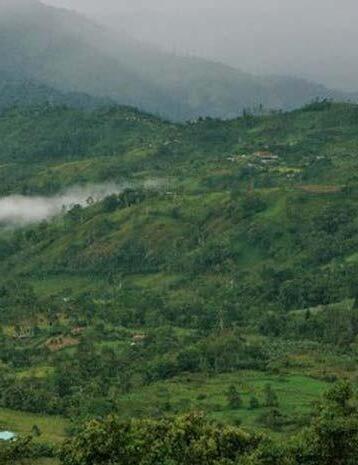

Submitted Content
Costa Rica’s impressive reputation for biodiversity was boosted recently when the research findings for two new plant species were published in scientific journals. Investigations led by National Museum botanist Alexander Rodríguez culminated in the formal naming of Sternospemation coques and Ilex hamelii as being distinct from any other known species in the world.
“These new findings confirm the value of investigations by the National Museum of Costa Rica in the area of natural history,” said Nayuribe Guadamuz Rosales, Minister of Culture and Youth. “These and many other discoveries to come, just confirm the need to preserve and protect this important and invaluable heritage … thus facilitating the work of national and foreign researchers who see an opportunity in the natural wealth of our country for possible great discoveries.”
Sternospemation coques is endemic to Cocos Island, where very limited distribution of the plant is confined to a small area. Collaborative efforts with Costa Rica’s National System of Conservation Areas (SINAC) and three park rangers, Diego Madrigal, Guillermon Blanco and Jonathan Loría, made it possible to collect and identify this new species of the genus Sternospemation. Researchers Marco Cedeño from Costa Rica and Orlando Ortiz from Panama played a key role in the investigation.
The genus Stenospermation is composed of 50 herbaceous species that are distributed in Central and South America, from
Guatemala to Bolivia and Brazil. Seven of these are in Costa Rica and include epiphytic species that grow on trunks or branches.
A completely unrelated study, extending over many years, resulted in formalizing a name for the new species Ilex hammelii. This species is endemic to the Guanacaste and Tilarán mountain ranges, recorded at altitudes between 900 and 1,600 meters above sea level.
Although plant samples were collected for some time, Ilex hammelii could not be registered under this name as a new species until recently. Belonging to a complex genus with a very wide international distribution — some 650 species worldwide and 14 in Costa Rica — it had to be confirmed as being previously unpublished in the scientific community.
Sternospemation coques

Click

“These new findings confirm the value of investigations by the National Museum of Costa Rica.”
Mountain bike tours are an excellent opportunity to explore the winding trails and peaks of rugged Costa Rica mountain terrain. They offer a chance to escape from the noise and bustle of city life and connect with nature while enjoying a thrilling adventure. Mountain biking is a popular form of outdoor recreation, enjoyed by people from all walks of life for many reasons.
One reason mountain bike tours are so much fun is the physical challenge they provide. Riding through steep and rocky terrain requires a lot of endurance and skill, and the experience of tackling these obstacles can be exhilarating. Cyclists are rewarded with stunning views of mountains and forests, which adds to the experience's excitement and sense of achievement. Additionally, the feeling of freedom and accomplishment after completing a challenging ride is hard to match, making mountain bike tours fulfilling as well as enjoyable.
Mountain bike tours also provide a great opportunity to socialize and bond with other riders.
Whether it is joining a group tour or going on an individual adventure, riders can often meet and connect with other like-minded individuals who share an interest in mountain biking. Sharing the experience with others creates a sense of camaraderie and a chance to bond over the mutual love of adventure and outdoor sports.
And riding with friends, family or partners can create lasting memories and strengthen relationships while exploring some of the most beautiful and remote parts of the world.
Mountain bike tours are fun for many reasons, including the physical challenge they provide, the stunning scenery, and the opportunity to bond with other riders. These tours offer a unique chance to escape from daily life and connect with nature while experiencing the thrill of an adventure.
Whether you are an experienced rider or just starting out, mountain bike tours are a great way to explore the beauty of the outdoors and challenge yourself physically and mentally.
Read more, click here
The experience of tackling these obstacles can be exhilarating.

Rocks, jungle, ramps, dirt...whatever the terrain — are you up to the challenge?


Meraki Adventures offers guided mountain bike tours and experiences that cater to riders of all skill levels. The company's philosophy revolves around the concept of "meraki," a Greek word that encapsulates the essence of putting heart, soul and passion into one's work. This ethos is evident in every aspect of the tour provider’s mountain bike adventures, ensuring that participants have a truly unforgettable and soul-stirring experience.
The experienced and knowledgeable guides at Meraki Adventures are highly skilled riders with a passion for outdoor exploration. With an intimate understanding of the local terrain, trails, and natural wonders, each guide aims to curate unique and customized biking adventures for each group.
What sets Meraki Adventures apart is their focus on the immersive journey that connects riders with the natural environment and local culture. Along the way, participants might have
opportunities to explore hidden gems, enjoy scenic viewpoints, and learn about the rich history, flora, and fauna of the region.
Whether you're seeking an adrenaline rush, a connection with nature, or simply a memorable outdoor adventure, Meraki Adventures promises an extraordinary journey filled with excitement, friendship, breathtaking vistas, and a deep appreciation for the joy of mountain biking.


Click here for more...

Spectacular
Seascapes from Above
 By Terry Carlile
By Terry Carlile
“I’ve seen enough,” said no one ever about Costa Rica’s enchanting coastal landscapes. Believing there’s no such thing as too many ways to showcase as many as we can in Howler, we’re always on the lookout for beautiful beach scenes captured from new perspectives.
When breathtaking birds-eye views of various Gold Coast shorelines recently caught our attention, we reached out to the source — Ben Murphy at Blue Zone Drone. Here’s what the photographer/videographer told us about his background and Playa Avellanas-based business.

I am from Nova Scotia, Canada. I have been visiting Costa Rica since early 2015. My first trip here was for a month. I was on a working vacation with friends and as a still photographer for a film crew. I knew I had to come back and see more of the country. So later that year I returned to Costa Rica to do some volunteer work in the rainforest before exploring other regions.
For me, Nova Scotia and Costa Rica share important similarities. They are close to the same size, and have many kilometers of coastline and an abundance of beaches. They also have in common the kindness and hospitality of the locals, and the amount of untouched nature.
After being into photography for many years, I started drone photography and videography in 2021.
Playa AvellanasTell us about some of the challenges you face in your work.
The biggest challenge with flying drones is the weather. Strong winds have made it difficult to get the drone in the air.
Obviously rain is another factor that keeps me grounded. The battery life of drones is usually 20 to 30 minutes per battery, depending on the drone model. Some have flight times of up to 50 minutes, but this varies depending on how much you're moving the drone around to get the shots you want.
Obstacles can pose a problem. Many drones have obstacle avoidance features to help prevent a collision with trees, buildings, cell towers, etc.
I mostly film along the coast and my biggest concern is keeping the drone high enough to avoid ocean spray or getting overtaken by a wave when flying close to the water. Crashes in the ocean can be costly.
As for the photography challenges, it mostly comes down to proper lighting. You need to get out when the sun's position is right and take into account clouds in the sky that could interfere with the content you're wanting to shoot.
Click here for more photos, videos and social media links
Playa Langosta
1) How many total miles of coast land is there?

a) 800 miles
b) 600 miles
c) 1,000 miles
d) 1,200 miles
2) How many miles on the Pacific coast?
a) 531 miles
b) 631 miles
c) 731 miles
d) 431 miles
Click lower left links for answers

Crashes in the ocean can be costly.
You’ve come to the right place if you’re looking to learn all about our tropical flowers and the hummingbirds that visit them. Costa Rica has a diverse range of flowers due to our unique climate, enabled by our location between the Pacific Ocean and the Caribbean Sea.
The flowers you’ll encounter in Costa Rica are as diverse as they are beautiful. From the vivid colors of guardia morada (translated as “purple country girl”), one of Costa Rica’s national symbols, to the delicate white blossoms of flor de Jamaica (hibiscus), you’ll find no shortage of stunning blooms throughout the country. And with these blooms come hummingbirds — more than 50 species of them, in fact!
Hummingbirds are drawn to Costa Rica for its plentiful nectar-filled flowers, and it’s a truly breathtaking sight to behold. The small birds are incredibly agile, flitting from bloom to bloom and hovering with ease. As they feed on the nectar, they help to pollinate the flowers, ensuring that more of these colorful blooms will adorn our country for years to come.

So make sure to take a moment to appreciate the beauty of Costa Rica’s tropical flowers and the hummingbirds that so gracefully make use of them.
If you’re looking to learn more about Costa Rica’s tropical flowers and hummingbirds, there are plenty of resources online that can help. You can also find plenty of guided tours that will take you to prime hummingbird spotting spots, or you can strike out on your own if you’re feeling adventurous. Either way, you’re sure to be enthralled by the beauty of Costa Rica’s natural splendor.
 Rojas video
Rojas video
Click for more online puzzle

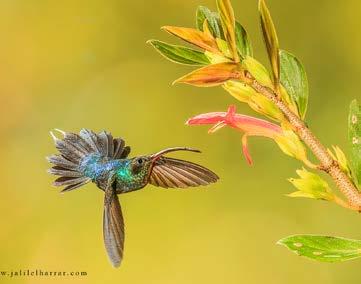

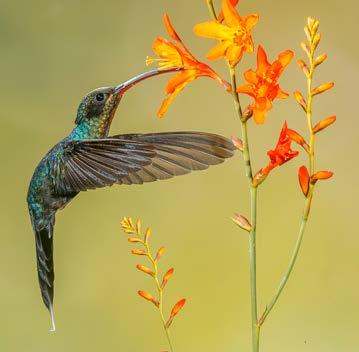
more - and the puzzle

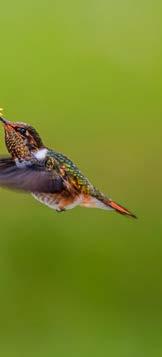














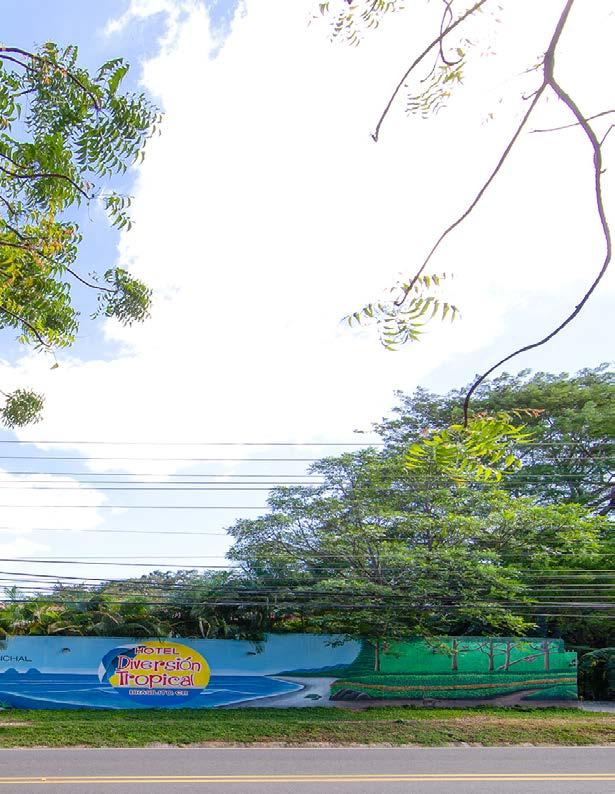
• 45 minutes from Liberia International Airport
• Brasilito, Guanacaste
• 1 km from the most beautiful beach in the region, Playa Conchal
• 10-12 restaurants and shopping within 1 km
• Built in 2006
• Ten rooms
• Turnkey operation
• Future growth is possible
Click here for more details.



Click the tabs above for those sections of our website.
Rock Patterson

15 years in Real estate in California, Florida and Costa Rica. 25 years in Healthcare Leadership.



Lana Taal
29 years in Real Estate. Extensive experience in business related to the area of commercial, tourism and agricultural projects in Costa Rica, Panama and Colombia.



many indigenous groups call home?
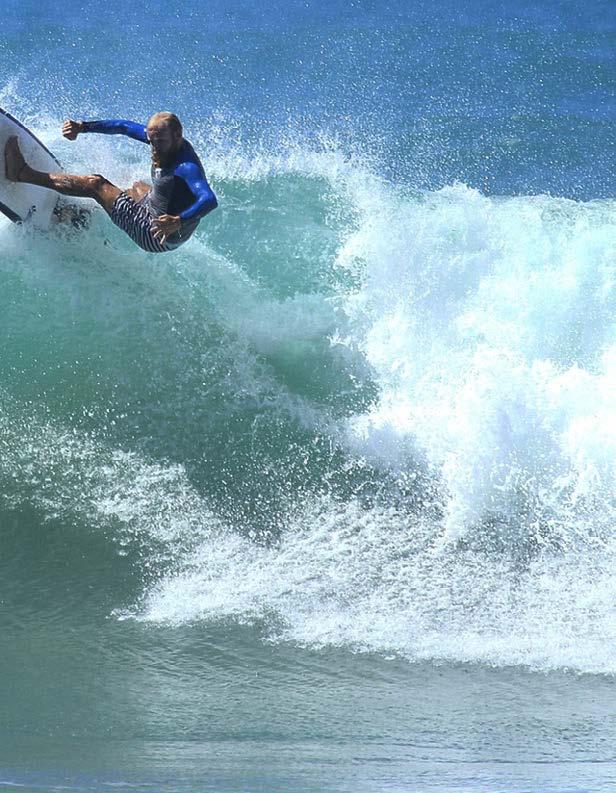
Who helped settle Monteverde in 1951?

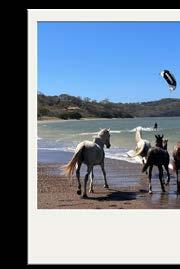

As a pioneer of kiteboarding in Costa Rica, where I’ve been privileged to teach the sport for nearly 20 years, I can recommend no better place for chasing the same passion. Whether venturing out for beginner lessons or to practice advanced moves, there’s nothing like sharing the warm waters with sea turtles, dolphins, tuna, pelicans and occasionally, whales, in what is widely regarded as Central America’s premier kiteboarding location.
Those unfamiliar with kiteboarding may be fascinated to know it’s a tri-dimensional activity — you can ride, jump and fly without being a pro. This is achievable after a few weeks of practice if you want to push your limits. For those wanting to push even further, imagine these kiteboarding records. In 40-knot winds, one jump reached 28.6 meters high with an airtime of 8.5 seconds. Some kiteboarders have exceeded 55-knot speeds, outpacing large trimarans to become the fastest wind-powered crafts in the water!
Article and photos by Origially published Nov/Oct
November mid it’s always in that July is




Nov/Oct 2019
now: kite season is between November and mid May, always windy that period. is also good.
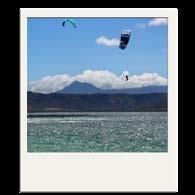
 Nicola Bertoldi
Nicola Bertoldi


Costa Rica is a renowned surfing destination, with plenty of options suited for surfers of all levels. The best time to catch the waves is from December to March, with swells peaking in January and February. Tamarindo, Pavones, Witch's Rock, and Jacó are among the top surf spots in the country, offering consistent waves that break both left and right. If you're looking for beginners-friendly beaches, Playa Santa Teresa or Playa Grande can be good choices.
Those seeking more challenging breaks can head to Salsa Brava or Ollie's Point. Some areas require a certain level of experience and skill due to strong currents and rocky bottoms so make sure to check conditions before paddling out — safety first!
Costa Rica's warm water temperatures may also attract curious marine creatures such as sea turtles or dolphins during your session. So grab your board, wax it up, maybe hire a guide if you really want to nail it like an expert — either way be prepared for some epic swells on the Pacific Coast!

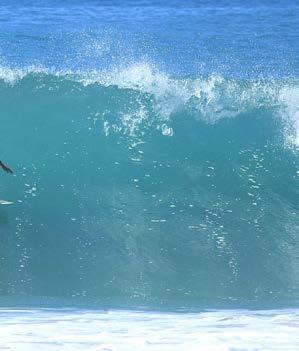


 Photographer
Photographer

Brought to you by Deals in Costa Rica
One of the beautiful aspects of Costa Rica is the variety of opportunities for adventures. Literally there is something for everyone. The extremes are real, from being lazy chillin’ in a hammock by the beach to trekkin' a volcano trail to adrenaline rush jumps.
Deals in Costa Rica presents a small fraction of the adventures that await your next vacation/escape. We highlight examples in just five regions to intrigue your adventuresome spirit. Click on the buttons for more information.


There are two major international airports. Check to see which one is nearest your desired locations to visit.
For Ticos, the term "pura vida" is an expression of happiness, optimism, and living life to the fullest. It is impossible to visit Costa Rica without hearing this phrase continuously.

1. A Rescue Quest
2. Diabetes #5 Killer
3. Sailing into Harm's Way
4. Pickleball Sweeps Costa Rica
Other popular articles:
• Gringo Gardners in Costa Rica
• Our New War Against Whaling
• Vasomotor Rhinitis
• Tico Expressions
• Assisting the Locals Understand Expats
• The Expat Dementia Dilemma in Costa Rica
• Aquatic ApesLiving a Biocentric Life
• Spanish: Real Estate Terms
• Peptic Ulcer Disease Solutions to the 28 Cons
• Health Tips for Hot Tub Enjoyment
• Fiercely Feminine
• Wisdom from Albert Einstein
• Costa Rica Takes Top Recognition in Coffee International Challenge
• Medical Conditions for Air Travel
• Cookware Awareness: The Trouble with Teflon
• Contact Dermatitis
See all Pura Vida articles which are translatable into 12 different languages, top 4:
Are you looking for a venue that provides personalized support and help with your planning?
Do you want to host a retreat in an inspiring destination that provides a unique and memorable experience for your community?
Look no further! Nestled in the serene rainforest, Vajra Jahra Villas & Retreat Center offers the perfect escape from the hustle and bustle of daily life. It's the ideal destination for groups looking for modern luxury surrounded by stunning nature.
Our dedicated team is happy to help handle logistics and planning so you can focus on providing the ultimate retreat experience for your guests.
We've worked with yoga and wellness retreats, surf camps, tantra retreats, women's retreats, group trips, corporate offsites, destination weddings and more.

Personalized support from our team that has more than a decade of retreat and travel planning experience in Costa Rica.
Total privacy and tranquility. The property is immersed in nature and features onsite hiking trails and jungle streams.
Unique experiences. From sound healing to surf lessons, cacao ceremonies to waterfall hikes; tell us the experience you want to have and we're here to make it happen.




 By Terry Carlile
By Terry Carlile
Playing pickleball is an absolute blast! If you're looking for a fun and exciting way to spend your free time, this game is definitely worth checking out. It's a great way to stay active while having a good time with friends.
With its simple rules and easy-to-learn gameplay, anyone can pick up the basics in no time. But don't let that fool you — there are plenty of strategies and techniques to master as well. Whether you're playing singles or doubles, the competition can get intense, but the friendly atmosphere ensures that everyone has fun.
From children to more seasoned participants, the game is literally for all ages. If you've played ping pong or tennis, pickleball is similiar. If you are not into sports, it's quick to learn and participate in thrilling matches.
The game gets your heart beating, stretches your muscles and helps you coordinate strategies, or just get the ball over the net in bounds!
Here's a partial listing of communities with pickleball courts. Add your location in the comments on the web article: (check your local Facebook groups)

• Alajuela
• Atenas
• Brasilito
• Coco
• Flamingo
• Hacienda Pinailla
• Jacó
• Lake Arenal/Tilaran/Arenal (under roof)
• Las Catalina's
• Ojochal
• San Ramon
• San José
• Tamarindo
• Tronadora
• Several hotels & resorts

With well over one million street dogs in Costa Rica, the need for an animal rescue that can help with the veterinary care, training, and rehoming of these neglected and malnourished beings is ever growing.
With a passion for the love and care of all beings, Bini Pitwell began facilitating the transfer of rescued dogs from Greece to their new homes in the UK in 2018. Through the global organization and transfer of rescued dogs, the concept of Rescue Quest was born!
Rescue Quest is now a functional dog rescue in Marbella, Costa Rica. The Rescue Quest mission statement is to rescue, rehabilitate, and rehome dogs in Guanacaste, Costa Rica.



According to the National Animal Health Service in Costa Rica, the number of dogs without homes topped one million back in 2018. That number has increased exponentially in recent years, but Rescue Quest has intentions of moving these numbers in a new direction.
In its six short months of being fully operational, Rescue Quest managed to help over 30 dogs, including three mothers and their full litters of puppies. The rescue also continues to receive more calls for help on a regular basis. Rescue Quest is growing rapidly and now requires more volunteers, donations, and community support to provide care for the furry friends of Guanacaste.
In order to keep up with the care of dogs in need, Rescue Quest initiated projects that ultimately will financially sustain the cost of running the rescue through sales of merchandise, as well as offering services that promote an eco-friendly lifestyle, such as the growth and distribution of micro greens.

Rescue Quest has rescued, cared for, and rehomed puppies, elderly, and disabled dogs alike, but Bini Pitwell’s long-term vision is for Rescue Quest to be a self-sustaining sanctuary of healing for all beings!

Driven by an inexhaustible passion to care for the abandoned, neglected, and abused, Rescue Quest intends to be a guiding light in the crusade against animal cruelty by not only rescuing the needy animals of Guanacaste, but also by partnering with other projects in their mission to end factory farming.
Here is a one-minute video on the work Rescue Quest is doing.
The Rescue Quest mission statement is to rescue, rehabilitate, and rehome dogs in Guanacaste, Costa Rica.

Visit our website to find out how you can help support this mission. Remember to follow @ rescuequest on Instagram and Facebook for daily updates on the care of the dogs and Rescue Quest’s mission!
Donate: GoFundMe
Contact number: +506 88906775
Captain John Paul Jones once said, “I wish to have no connection with any ship that does not sail fast; for I intend to go in harm's way."
This is a philosophy I have practiced all my life. A ship is our most important asset. It has to be strong, long range and fast. The John Paul DeJoria fills the bill in all three categories, and thus is ideal for what we need in a ship to sail into harm’s way.
What exactly does it mean to sail into harm’s way and what does it require?
We have the ship, and we have the crew and I only accept crew members willing to risk their lives to defend our clients in the sea. This means going into a situation courageously with resolve and determination.
Way back in 1979, I set forth in my first vessel, the Sea Shepherd. Our target was the pirate whaler Sierra, the most notorious whalekilling operation on the ocean. My objective, when leaving Boston to cross the Atlantic, was to find that ship and to ram and disable it. Aside from myself, there were 19 crew members.


On July 16, we found the Sierra and pursued it for 200 miles into the Portuguese port of Leixoes. I could not take action at sea because of bad weather. We tied up for custom clearance while the Sierra drifted in the harbor.
After clearing in with the authorities, I was notified that the Sierra was preparing to depart. I requested clearance and it was refused. There was no way I was going to let that pirate whaler escape, so I called a crew meeting on deck to announce that clearance be damned, we were going out to where the Sierra was drifting and we would ram that vessel.
The pirates of the 17th century were way ahead Their ships were run democratically.Captain Paul Watson Photos courtesy of the author
I remember saying, “Today is the day that the Sierra dies.” I said to the crew, “I can’t guarantee you won’t be hurt but I can pretty much guarantee that we will all be arrested, so the choice is yours. If you are with me, great, and if you are not, you have 10 minutes to pack and be on the dock.”
Ten minutes later, 17 crew members were on the dock, leaving me with only Chief Engineer Peter Woof from Australia and 3rd Engineer Jerry Doran from Hawaii.


We cast off and built-up speed as we crossed the harbor. We smashed into the bow of the Sierra to damage the harpoon and then made a 360-degree turn to starboard, bringing us around on the port side of the whalers. I saw Norwegian Captain Arvid Nordengen raise his

rifle and heard bullets clang on the steel bridge wing rail. He could not stop us, and at full speed we struck the port side hull just behind the forepeak, ripping open the hull into the freezer compartment. We then disengaged and I left the harbor on a northerly course, pursued by a Portuguese naval vessel that threatened to fire on us. I should have called their bluff, but with only myself and two crew, we submitted and agreed to return to port. That was the only mistake I made that day.
For the rest of the story, click here
ahead of their time.
Little is accomplished without risk. Any strategy without risk will most likely fail.Unknown Iceland whaling fleet scuttled
¿A qué horas abren? — What time do you open?
¿A qué horas cierran? — What time do you close?
bien frío — really cold
cerveza artesanal — craft beer
¿Cual es su número de teléfono? — What is your phone number?
¿Cuándo es happy hour? — When is happy hour?
Cuando tenga tiempo — When you have a moment
¿Cuánto es? — How much?
Cuentas separadas, por favor — Separate checks, please
¿Cuánto es la cuenta en dólares? — How much is the check in dollars?

¿Dónde está el servicio? — Where is the bathroom?
¿Dónde puedo tomar un taxi? — Where can I get a taxi?
Estoy listo (or lista) para ordenar. — I am ready to order.
La comida estuvo muy buena. — The food was really good.
La cuenta, por favor — The check, please Más hielo, por favor — More ice, please
Me gustaría … — I would like … otra (if referring to a feminine noun like una birra or una cerveza) or otro (if referring to a masculine noun like un whiskey) — another one
Por favor sin … — Please without … propina — tip
Quédese el vuelto. — Keep the change. sin azúcar — no sugar
Soy alérgico (or alérgica) a … — I am allergic to …
¿Tienen servilletas? — Do you have napkins?
¿Tiene un menú de cócteles? — Do you have a cocktail menu?
una birra or una cerveza — a beer
Una botella de agua, por favor — One bottle of water, please
una copa de vino blanco — a glass of white wine
una copa de vino tinto — a glass of red wine
Uno (or Una) más, por favor — One more, please
Una orden extra de … — One extra order of …
Un vaso con agua, por favor — One glass of water, please
un vaso con hielo — a glass of ice
Vuelvo mañana. — I’ll be back tomorrow.


New legal regulations will soon be in force to simplify requirements of Costa Rica’s National Environmental Technical Secretariat (SETENA) for new projects, businesses, and low-impact private developments.
On February 8, 2023, the government of Costa Rica executive branch announced and signed a new decree of the General Regulations for Environmental Evaluation, Control, and Monitoring. It becomes effective in August, four months after publication on April 19 in the official newspaper La Gaceta.
The new regulation defines all general requirements and procedures to determine the environmental viability of activities, developments or projects that by law may affect elements of the environment. It also establishes all of the preventive measures that project developers must implement, depending on the impact.
Franz Tattenbach Capra, Minister of Environment and Energy, stated, "The new regulation seeks to ensure a greater presence of SETENA in the field to verify compliance with environmental commitments. The country requires the conservation of natural resources and their rational and sustainable use. Still, it must also establish the necessary guidelines to contribute to investment and employment generation for economic reactivation."
Currently, SETENA grants environmental feasibility permits in Costa Rica. The D2 form is required for all projects framed in the development plan for their commercial activity, whether agricultural, industrial, or construction projects. Depending on the project's environmental impact, the D2 form must be completed. That includes lowenvironmental impact projects, which fall into categories C and B2.
Government information indicates that last year alone, SETENA processed 1,644 D2 files. The new guideline and regulation reform will eliminate the duplication of requirements at the institutional level. The bureaucracy and permitting process is simplified for new projects, businesses, and low-impact private developments.
Beneficiaries under the new guideline will include all improvement, repair and reconstruction projects executed by public or private infrastructure developers. They will no longer require SETENA’s green light concerning a project’s environmental viability, if they comply with the parameters established by the regulation.
The new reform clearly states that only low-impact projects will be exempt from filing the D2 form. Therefore, sufficient legaltechnical environmental support is necessary to determine the viability or exemption of filing the D2 form before making SETENA requests.
Relevant changes in the new regulation:
• Simplification of procedures and reduction of requirements for the project developer.
• Greater weight on an environmental follow-up and monitoring model and the ecological fragility conditions of the project areas.
• Cost reduction of up to 50% in Environmental Impact Studies for PYMES.
• Reduced review deadlines for all forms and evaluation instruments on the part of the administration.
• All improvement, repair and reconstruction works or projects carried out in public or private infrastructure do not require environmental viability.
We at GM Attorneys will be pleased to help you with your legal matters in Costa Rica! Please feel free to contact us at info@ gmattorneyscr.com or visit our blog section at https://www.gmattorneyscr.com/gm_website/ html/blog.php

Only lowimpact projects will be exempt from filing the D2 form.


• New Obligations for Inactive Corporations
• Options for Real Estate Subdivision in Costa Rica
• New Capital Gains Tax in Costa Rica
• Corporation Basics: Benefits and Obligations
• Costa Rica Residency
• Home Luxury Tax 2022
• FAQs for Expats
• Mandatory Registration of Rental Properties for Non-Traditional Tourist Accommodations
• The Eviction Process in Costa Rica
• Advance Directives for Medical Decisions
• New Laws Provide Second Chance for Corporations Being Dissolved or Already Dissolved
• Digital Nomads: Work Remotely From the Land of Pura Vida!
• Chartering in Costa Rica for International Vessels is Allowed
As part of the celebration of Día del Agricultor (Farmer’s Day) on May 15, the government of Costa Rica issued the first license for the use of psychoactive cannabis, that is, that used for medicinal purposes.
Azul Wellness S.A., authorized by the MAG, will develop the cannabis cultivation and processing project in an 800 m greenhouse area located in Filadelfia, Guanacaste. The resolution was signed by the Minister of Agriculture and Livestock (MAG), Víctor Carvajal, in response to a request made by Azul Wellness S.A., which will develop the cannabis cultivation and processing project in an 800-squaremeter greenhouse area in Filadelfia, Guanacaste.
Read more: Experts will analyze international hemp and cannabis markets, the challenges and opportunities for Costa Rica
Similarly, two applications for the planting and processing of hemp and a license for medical cannabis are in the evaluation process.
The Law on cannabis for medicinal and therapeutic use and on hemp for food and industrial use was signed on March 2, 2022, by then-President Carlos Alvarado.
The regulation for industrial hemp was signed by President Rodrigo Chaves on September 7, 2022, followed by the regulation for cannabis for medicinal use, on September 30.
Click to read more


 by Casey Halloran Originally
by Casey Halloran Originally
published May 17, 2023
An argument to regulate unlicensed vacation rentals in Costa Rica before overpricing and gentrification ends up breaking up beach communities and ruining tourism.
I’ve worked in Costa Rica travel for a while and seen the industry take a few hits over the years.
We were a fledgling company when the dotcom bubble burst in 2000. The resulting recession left us wondering if online businesses even had a future in the first place (they did). A year later, 9/11 left many people wondering if they’d ever fly again (they did).
Then there’s been the financial crash, swine flu, bird flu, Zika, and, of course, the granddaddy of them all, Covid. Did I miss anything out? Add in the cost of living crisis and global uncertainty, it’s a wonder how we survived at all.
But survive we did, over and over, although it wasn’t easy. I put it down to a combination of leadership, skill, luck, the importance of having a fantastic team, and, crucially, Costa Rica itself.
What do I mean by that when I say that our survival is, to a large part, down to Costa Rica itself?
Do I mean that if we were someplace else and focused on another country, we may not have survived? Yes, I do.
After all, after each one of the hits mentioned above over the past 20+ years, Costa Rica has been a retreat, a place to escape to. Costa Rica is a soothing balm on a sunburnt skin. It’s that kind of country.
There’s a vibe to Costa Rica that only the most hard-hearted fail to notice and makes things feel alright. I imagine that’s what pura vida is.
This is why Costa Rica’s tourism industry always survives. It always finds a way because people always want to visit because Costa Rica makes you feel good. The Costa Rican tourism industry leads the way in sustainability, not only environmentally, but also in creating prosperity for people.
Unlike many Latin American countries, Costa Rica doesn’t have an influx of poverty-stricken people heading into the cities because there’s no work in the countryside. Costa Rica found a way to lift many citizens into prosperity through tourism, especially in rural areas.
As the editor of this website wrote a couple of years back, “I know Ticos with no college education who’ve set up successful transport businesses, car rental operations, surf schools, rafting centers, boutique stores, and property management businesses. All in parts of rural and coastal Costa Rica where jobs would be non-existent otherwise… I know successful, independent Costa Rican tour guides, private chefs, surf instructors, beachwear designers, bikini-store owners, hoteliers, rental home owners, restaurant owners, and ziplineoperators. All these people live in rural and beach communities creating opportunities and prosperity.”
Tourism in Costa Rica has been a tide that has lifted all ships. It’s helped combat much of the inequality and poverty you see dividing town and countryside in Latin America.
But there’s a growing threat to Costa Rican tourism
It’s not as dramatic as the pandemic, but it’s a threat nonetheless to the livelihoods of so many Costa Ricans who’ve created good lives for themselves in hospitality. And that threat is the growing prevalence of unlicensed vacation rentals in Costa Rica.
As someone with natural libertarian leanings, I generally root for less regulations in life, not more. But the concept of fair play trumps everything for me. An equal playing field and all that, which is not what we’re seeing right now. So it’s clear, that to preserve the unique tourism model we have in Costa Rica, we need to regulate these unlicensed rentals. Here are the main reasons why:
The vacation rental industry in Costa Rica is worth approximately $800 million annually, yet it remains largely untaxed and unregulated. If the government collected a 13% IVA, it could generate an extra $100 million in tax revenue each year. This new revenue could help solve budgetary constraints in rural areas and provide new tools for addressing crime, water infrastructure, and ecological challenges.
Vacation rentals often offer cheaper rates than licensed lodging options. This is largely due to the fact that unlicensed rentals avoid expenses such as IVA, renta, CCSS, patentes, licenses, and Ley 7600. These expenses can represent a 25-35% cost advantage for unlicensed rentals. Additionally, a significant part of rental income is not kept in
Costa Rica, but instead ends up in foreign bank accounts. Regulating the vacation rental industry would level the playing field for licensed lodging operators and ensure fair competition.
3. Sharing the wealth
Costa Rica’s tourism industry has been successful in distributing wealth among local stakeholders. We see this every day at small and midsize hotels where employees receive good wages, benefits, and contribute to social welfare. This is not the case with vacation rentals, where staff is often employed “informally”.
Luxury home owners are often non-resident foreigners who lack a connection to the community. As such, many feel less compelled to participate in the social welfare programs that are a central part of Costa Rican society.

4. Bridge the rich vs poor divide
Post-pandemic economic stimulus has led to a surge in real estate investment in Costa Rica, particularly in luxury homes. Investors see unlicensed rentals as a sound investment due to low costs of operation and access to cheap capital. This has led to a massive increase in available room nights in vacation rentals, diverting tourism dollars away from high-tax lodging towards low-tax paying rental properties.
Click here for the rest of the editorial

QCOSTARICA – Honda, through its distributor FACO in Costa Rica, is launching a campaign to replace airbag inflators located in the driver’s and passenger’s seats of certain vehicles from 1996 to 2016.
This is due to the potential for them to deploy incorrectly and cause serious injury.
To ensure everyone’s safety, Honda is organizing a free repair marathon, “reparatón”, from 8 am to 5 pm next Thursday to Sunday (May 25 to May 28) at the National Stadium in La Sabana.
Customers can check the VIN number at www. hondacostarica.com/seguridad-productos, by email at servicioalcliente@hondafaco.com or
calling customer service at (506) 2010-4100, to see if their vehicle needs to be serviced.
Honda-trained technicians will make the changes. The process takes around 45 minutes, with recreational spaces set up to make waiting pleasant. Refreshments and waiting places will be provided.
“For the second year in a row, we urge Honda vehicle owners to attend this call, verifying if their vehicle qualifies within the category that must make the change in order to always prioritize the safety of all its passengers, the service will be without an appointment. and 100% free,” stated Francisco Castro, Marketing Director of Honda Costa Rica.
QCOSTARICA – The ámara de Infocomunicación y Tecnología (Infocom) – Chamber of Infocommunication and Technology, makes a respectful, but at the same time vehement, call on the government to maintain the efforts that have sustained the success achieved by Costa Rica at the level of attracting foreign investment, in the midst of uncertainty that has generated the dissolution of the agreement with the Coalición Costarricense de Iniciativas de Desarrollo (CINDE) – Costa Rican Coalition of Development Initiatives.
La Babana Sur, on the west side of San JoseInfocom recognizes the role and trajectory of the apolitical, non-profit agency CINDE in the last 40 years, since the results in terms of attracting foreign direct investment to the country, generating employment and creating value for Costa Rica are evident; thanks to the support of more than 400 multinationals
that have generated at least 180,000 direct jobs for Costa Ricans, without considering the contribution in terms of indirect and formal jobs.
Read more: Government of Rodrigo Chaves breaks the agreement with CINDE
According to data from the Coalition, Costa Rica is a knowledge-intensive economy, which exports twice as many services as the average for countries in the Organization for Economic Cooperation and Development (OECD), and is home to 16 of the top 100 companies of technology worldwide.

Costa Rica needs to maintain the good investment climate achieved in recent decades
• Reader's Choice — your submitted content of
• Costa Rican-owned restaurants
• From the Kitchen — traditional Costa Rican recipes

• Expat recipes — from Facebook groups using local ingredients
• Advertising partners

Plantain fritters are a delicious and easy-to-make snack or side dish that is popular in many Latin American and Caribbean countries. Made from mashed plantains that are mixed with flour, eggs, and a few other simple ingredients, these fritters are then fried until crispy and golden brown. They can be served sweet or savory and are perfect as an appetizer, snack, or even a breakfast dish. In this article, we will go over everything you need to know about making plantain fritters, from selecting the right plantains to serving them up hot and crispy.
Plantain fritters, also known as tajadas, are a popular Latin American and Caribbean dish made from mashed plantains mixed with various flavors and seasonings. These fritters are crispy on the outside and soft on the inside, making them the perfect snack or side dish. They are easy to make and can be enjoyed by everyone, including vegans and vegetarians.
Plantain fritters are essentially balls or patties made from mashed plantains that are seasoned with herbs, spices, and other ingredients. The mixture is then shaped and fried until golden brown, resulting in a delicious and crispy outer layer. Plantain fritters can be savory or sweet, depending on the recipe.
Plantain fritters have a rich history that traces back to Africa, where the plantain originated. The dish was brought over to the Caribbean and Latin America during the slave trade and has since become a popular snack among locals. Today, plantain fritters are a staple in many Latin American and Caribbean households and can be found on the menu in many restaurants.
To make plantain fritters, you'll need ripe plantains, flour, spices, salt, and oil for frying. You can also add other ingredients such as eggs, cheese, or vegetables to enhance the flavor. Keep in mind that the riper the plantains, the sweeter they will be, so adjust the amount of sugar and spices accordingly.

You'll need a few basic tools to make plantain fritters, including a mixing bowl, a fork or masher, a skillet for frying, and a slotted spoon for removing the fritters from the oil. If you want to shape the fritters into balls, a cookie scoop or spoon will be helpful.


Here's your opportunity to showcase and support your local Costa Rican-owned dining establishment. Contact us with photos, address, menu selections and WHY YOU ENJOY their food so much. For a small fee, Howler will publish your input, like this June choice, Grill Alvarito in Huacas, Guanacaste.
Contact terry@howlermag.com for details.

Photo and contribution by Perry Thomas
As you travel from Tamarindo to Huacas, before you get to town, you'll see smoke rising from the wood fire smokers at Grill Alvarito. I've been eating here since I discovered them over four years ago.
Their new location is beautifully set in a tropical forest setting while the aroma of barbecue fills the air. The servers are always happy and eager to serve you. The owner/cook, Jorge Pineda, always greets you with a smile. If not busy later, he'll grab his ukulele and sing "Somewhere Over the Rainbow" with his thick Spanish accent.
From their chifrijo bowl to the combo platters ... absolutely delicious. Our family has enjoyed their grande platters for Thanksgiving, birthdays, and Christmas meals.
506 8404 5060
Click logo for more information and map.


A healthy and satisfying salad made with protein-packed chickpeas and black beans, mixed with fresh veggies and a zesty dressing.
Ingredients for 4 servings
2 cans black beans, drained and rinsed
2 cans chickpeas, drained and rinsed
½ red onion, chopped
20 cherry tomatoes, halved
½ cup fresh parsley (20 g), chopped
½ cup fresh mint (15 g), chopped
¼ cup olive oil(60 mL)
¼ cup apple cider vinegar(60 mL)
¼ cup lemon juice (60 mL)
salt, to taste
pepper, to taste
feta cheese, crumbled, to taste
1. In a large bowl, combine the chickpeas, black beans, red onion, cherry tomatoes, fresh parsley, and fresh mint.
2. In a small bowl, mix together olive oil, vinegar, lemon juice, salt, and pepper.
3. Pour over the salad and toss to coat.
4. Top with crumbled feta cheese.
Thank you Sharon L. Jordan for sharing. From the Cooking In Costa Rica Facebook Group
Thank you John Brockmeier for sharing. From the Howler Magazine Facebook Group
Recipe and video by Ereka Vetrini
Ingredients (makes 2 tacos)
1/2 lbs ground beef, turkey or chicken
1/2 tsp chili powder
1/4 tsp cumin
1/4 tsp paprika
1/2 tsp salt
1/4 tsp garlic powder
1/2 cup shredded cheddar cheese or Mexican blend
2 tbsp yellow onion finely diced
2 small flour tortillas
1/4 cup red onion finely diced
1/2 jalapeno sliced
1/2 cup shredded romaine
1/4 cup guacamole or mashed avocado
1/4 cup salsa
1/4 cup sour cream
1. To a medium-sized bowl add ground meat, chili powder, cumin, paprika, salt, garlic powder, and shredded cheese. Mix well and form 2 balls of meat.
2. Top each with a few sliced of jalapeno and set aside.

3. Place the ground beef ball onto a non-stick skillet as shown.
4. Top with a tortilla and press down using the back of a smaller pot or pan.
5. Cook for about 3 to 4 minutes or until the meat is cooked through, flip and let cook for a minute more.
6. Remove from heat and top with shredded romaine, guacamole, salsa, sour cream and red onion or any of your other favorite taco toppings!


